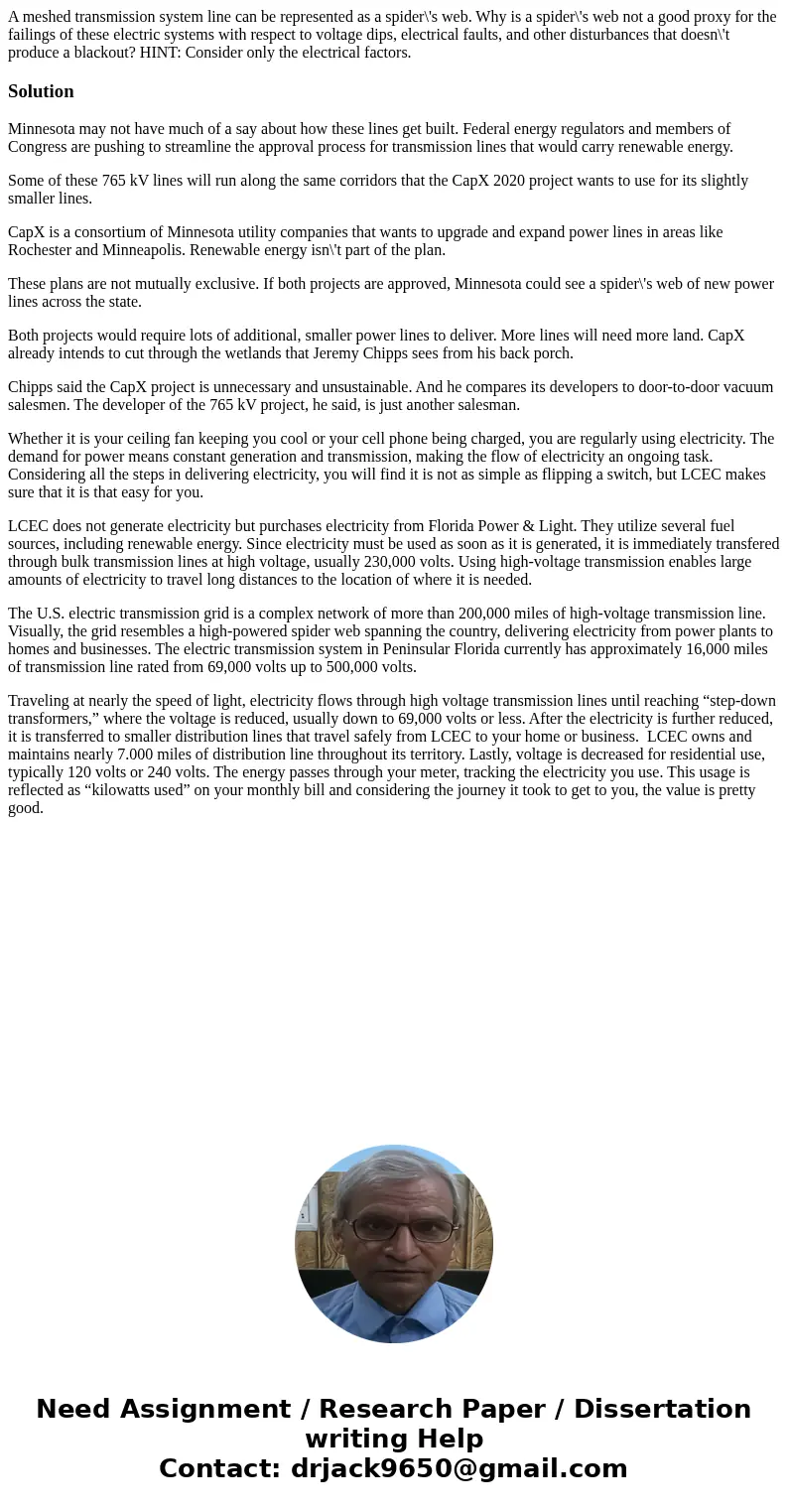A meshed transmission system line can be represented as a sp
A meshed transmission system line can be represented as a spider\'s web. Why is a spider\'s web not a good proxy for the failings of these electric systems with respect to voltage dips, electrical faults, and other disturbances that doesn\'t produce a blackout? HINT: Consider only the electrical factors.
Solution
Minnesota may not have much of a say about how these lines get built. Federal energy regulators and members of Congress are pushing to streamline the approval process for transmission lines that would carry renewable energy.
Some of these 765 kV lines will run along the same corridors that the CapX 2020 project wants to use for its slightly smaller lines.
CapX is a consortium of Minnesota utility companies that wants to upgrade and expand power lines in areas like Rochester and Minneapolis. Renewable energy isn\'t part of the plan.
These plans are not mutually exclusive. If both projects are approved, Minnesota could see a spider\'s web of new power lines across the state.
Both projects would require lots of additional, smaller power lines to deliver. More lines will need more land. CapX already intends to cut through the wetlands that Jeremy Chipps sees from his back porch.
Chipps said the CapX project is unnecessary and unsustainable. And he compares its developers to door-to-door vacuum salesmen. The developer of the 765 kV project, he said, is just another salesman.
Whether it is your ceiling fan keeping you cool or your cell phone being charged, you are regularly using electricity. The demand for power means constant generation and transmission, making the flow of electricity an ongoing task. Considering all the steps in delivering electricity, you will find it is not as simple as flipping a switch, but LCEC makes sure that it is that easy for you.
LCEC does not generate electricity but purchases electricity from Florida Power & Light. They utilize several fuel sources, including renewable energy. Since electricity must be used as soon as it is generated, it is immediately transfered through bulk transmission lines at high voltage, usually 230,000 volts. Using high-voltage transmission enables large amounts of electricity to travel long distances to the location of where it is needed.
The U.S. electric transmission grid is a complex network of more than 200,000 miles of high-voltage transmission line. Visually, the grid resembles a high-powered spider web spanning the country, delivering electricity from power plants to homes and businesses. The electric transmission system in Peninsular Florida currently has approximately 16,000 miles of transmission line rated from 69,000 volts up to 500,000 volts.
Traveling at nearly the speed of light, electricity flows through high voltage transmission lines until reaching “step-down transformers,” where the voltage is reduced, usually down to 69,000 volts or less. After the electricity is further reduced, it is transferred to smaller distribution lines that travel safely from LCEC to your home or business. LCEC owns and maintains nearly 7.000 miles of distribution line throughout its territory. Lastly, voltage is decreased for residential use, typically 120 volts or 240 volts. The energy passes through your meter, tracking the electricity you use. This usage is reflected as “kilowatts used” on your monthly bill and considering the journey it took to get to you, the value is pretty good.

 Homework Sourse
Homework Sourse